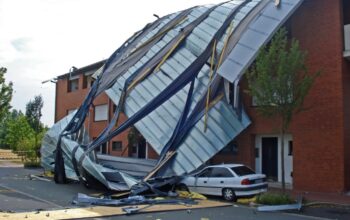Domestic violence is a pervasive issue that affects countless individuals and families. It’s a cycle that, once started, can be challenging to break. But with the right strategies and interventions, it’s possible to end this cycle and create a safer environment for everyone involved.
This article delves into effective strategies for intervention and prevention. You’ll learn actionable steps to help those involved in a domestic violence incident and ways to prevent such incidents from occurring in the first place.
Understanding and Breaking the Cycle of Violence
Before diving into solutions, it’s vital to understand the cycle of violence. Typically, it starts with tension building, leading to an incident, followed by reconciliation, and then calm. Recognizing these stages can help in timely intervention.
Early intervention is key. Look out for signs of emotional or physical abuse in friends or family members. Unexplained injuries, changes in behavior, or isolation from loved ones can be red flags. While physical injuries are evident, the psychological impact of domestic violence runs deep. Victims often experience anxiety, depression, and post-traumatic stress disorder. Recognizing these emotional wounds is the first step towards healing.
Empowerment and Support: From Victims to Survivors
Empowering those affected by domestic violence is essential. Encourage them to speak out, seek help, and know their rights. Local shelters, helplines, and counseling services can provide the support they need. Victims need to know they’re not alone. Friends, family, and support groups can offer a listening ear, a shoulder to cry on, and resources for recovery. Surrounding oneself with a strong support system can make the journey to healing smoother. Survivors need to prioritize self-care. Meditation, journaling, and exercise can help them cope, heal, and rebuild their lives. So, encourage them to find what works best for them and stick to it.
Education, Awareness, and Professional Training
Awareness can be a game-changer. Schools, colleges, and community centers should offer educational programs on domestic violence. By understanding the issue, you’re better equipped to address it. Launch or support public awareness campaigns. Billboards, social media posts, and community events can spread the message, educate the public, and reduce the stigma associated with domestic violence. Doctors, teachers, and other professionals often come across victims. By providing them with training on recognizing and addressing domestic violence, you’re creating more touchpoints for intervention and support.
Legal Measures and Law Enforcement’s Role
Legal measures can’t be overlooked. If you know someone facing domestic violence, advise them to seek legal protection. Restraining orders and legal counseling can be instrumental in ensuring safety. Law enforcement plays a pivotal role. Beyond arrests, they can guide victims to resources, ensure their immediate safety, and provide a sense of security. It’s crucial for victims to know how and when to reach out to the police or professional bodyguard.
Community, Technology, and Financial Independence
Remember, it’s not just an individual’s problem; it’s a community issue. Organize or participate in community watch programs. These initiatives can deter potential abusers and provide a support system for victims. With the rise of technology, there are now apps and platforms dedicated to helping victims of domestic violence. Stay updated on these resources. They can be lifesavers in emergencies. Financial constraints often trap victims in abusive relationships. By promoting financial literacy and independence, you provide victims with a way out. Therefore, encourage them to seek employment, save money, and be aware of their financial rights.
Children, Families, and the Role of Men
Children witnessing domestic violence are at risk of emotional and behavioral issues. It’s vital to address their needs, provide counseling, and ensure a safe environment for them. Remember, they’re the future, and their well-being is paramount. Teach your kids about respect, consent, and healthy relationships. Open conversations at home can lay the foundation for a violence-free future. Domestic violence affects both men and women. Moreover, men can play a significant role in prevention by challenging toxic masculinity, educating peers, and setting positive examples.
The Societal Impact of Domestic Violence
Beyond the immediate victims, domestic violence casts a shadow over entire communities. It’s not just about physical harm; it’s about the atmosphere of fear, the ripple effects on children who witness it, and the societal norms that may inadvertently perpetuate it. When a community has high rates of domestic violence, it often correlates with other issues like substance abuse, child neglect, and other forms of crime. Addressing domestic violence can lead to a more harmonious, productive, and safer community for all its members.

The Economic Burden of Domestic Violence
Domestic violence carries a heavy economic toll, both for individuals and society. Victims may face lost wages, job instability, and mounting medical bills. On a larger scale, businesses grapple with decreased productivity and increased absenteeism. The societal costs extend to law enforcement, legal proceedings, and healthcare services. Addressing domestic violence isn’t just a moral imperative; it’s an economic necessity. Investing in prevention and support can foster healthier communities and stronger economies.
Challenging Cultural Norms and Beliefs
Cultural beliefs can sometimes perpetuate domestic violence, making intervention challenging. Family matters remain private in many societies, discouraging victims from seeking external help. To combat this, we must challenge and reshape these deep-seated norms. Promoting gender equality, respect, and open dialogue can pave the way for change. We can break the chains of silence and inaction by fostering a culture where victims feel supported and understood.
Holistic Healing Approaches
Healing from domestic violence requires a multifaceted approach. Beyond traditional counseling, holistic methods like art therapy, nature excursions, and group sessions offer victims diverse avenues for recovery. These therapies address the whole person’s emotional, physical, and spiritual needs. By embracing various healing techniques, we can provide victims with a comprehensive toolkit to rebuild their lives.
Survivors’ stories can be a powerful tool in the fight against domestic violence. By sharing their experiences, survivors break the isolation many victims feel. These narratives offer hope, guidance, and a sense of community. Whether through books, support groups, or public speaking, these stories underscore the resilience of the human spirit and the possibility of a life beyond violence.
Preventive Education and Relationship Building
Prevention is the cornerstone of addressing domestic violence. By offering education on healthy relationships, effective communication, and conflict resolution, we can equip individuals with the skills to navigate challenges. Schools can play a pivotal role by weaving these topics into their curriculum, ensuring that the next generation is better prepared to build respectful, non-violent relationships.
Global Perspectives on Domestic Violence
Domestic violence is a universal issue, but its manifestation and the strategies to combat it can vary across cultures and societies. By examining these diverse approaches, we can gain a richer understanding and potentially adopt effective strategies from one culture to another.
- Scandinavian Approaches: Countries like Sweden and Norway have long been pioneers in gender equality. Their strategies often involve comprehensive educational programs from a young age that emphasize respect, consent, and healthy relationships. Additionally, these nations have robust support systems in place, including shelters and counseling services, backed by strong legal frameworks.
- African Community Interventions: In parts of Africa, community-based interventions are common. For instance, community discussions and debates in Uganda are organized to challenge and change societal norms that perpetuate domestic violence. These grassroots movements have been effective in creating local change.
- Asian Focus on Family Counseling: In countries like South Korea and Japan, there’s a strong emphasis on family counseling. Recognizing the close-knit nature of families, interventions often involve entire families in the healing and reconciliation process, ensuring that the cycle of violence is broken at its core.
- Latin American Legal Reforms: Many Latin American countries, such as Brazil and Argentina, have recently strengthened their legal frameworks against domestic violence. They’ve introduced stricter penalties for perpetrators and have launched nationwide awareness campaigns to educate the public.
- Middle Eastern Women Empowerment Programs: Despite facing cultural and societal challenges, several Middle Eastern countries are making strides in addressing domestic violence. Initiatives in countries like Jordan and Lebanon focus on empowering women through education, financial independence, and legal awareness.
There’s no one-size-fits-all solution. However, cross-cultural collaborations can lead to innovative solutions, combining the strengths of different approaches to create a comprehensive strategy against domestic violence.
Resources and Helplines
If you or someone you know is experiencing domestic violence, it’s essential to know that help is available. Here’s a list of helplines, organizations, and further reading to assist you:
Helplines:
- National Domestic Violence Hotline (U.S.): 1-800-799-SAFE (7233)
- Refuge (U.K.): 0808 2000 247
- 1800 RESPECT (Australia): 1800 737 732
- SOS Femmes (France): 01 45 49 13 19
- Women’s Aid Organization (Malaysia): +603 7956 3488
Organizations:
-
- UN Women: The United Nations entity dedicated to gender equality and women’s empowerment.
- Futures Without Violence: Provides programs, policies, and campaigns that empower individuals and organizations to end violence against women.
- Safe Horizon: The largest non-profit victim services agency in the U.S.
Further Reading:
- The Domestic Violence Sourcebook:
- A comprehensive guide to understanding and responding to domestic violence.
- Why Does He Do That? Inside the Minds of Angry and Controlling Men:
- It offers insights into the mindset of abusive men and provides strategies for dealing with them.
Remember, always call your local emergency number if you’re in immediate danger. These resources are here to support you but are not a substitute for emergency services.
In Conclusion
Domestic violence is a multifaceted issue that demands a collective response. By understanding its roots, recognizing its signs, and implementing comprehensive strategies, we can pave the way for safer communities. Every individual, regardless of gender or background, has a role to play in this fight. Whether it’s through education, support, or advocacy, your efforts can make a difference. Let’s unite in our commitment to break the cycle of domestic violence, ensuring a brighter, violence-free future for all.
Related Posts













One thought on “Breaking The Cycle Of Domestic Violence: Strategies For Intervention And Prevention”
Comments are closed.